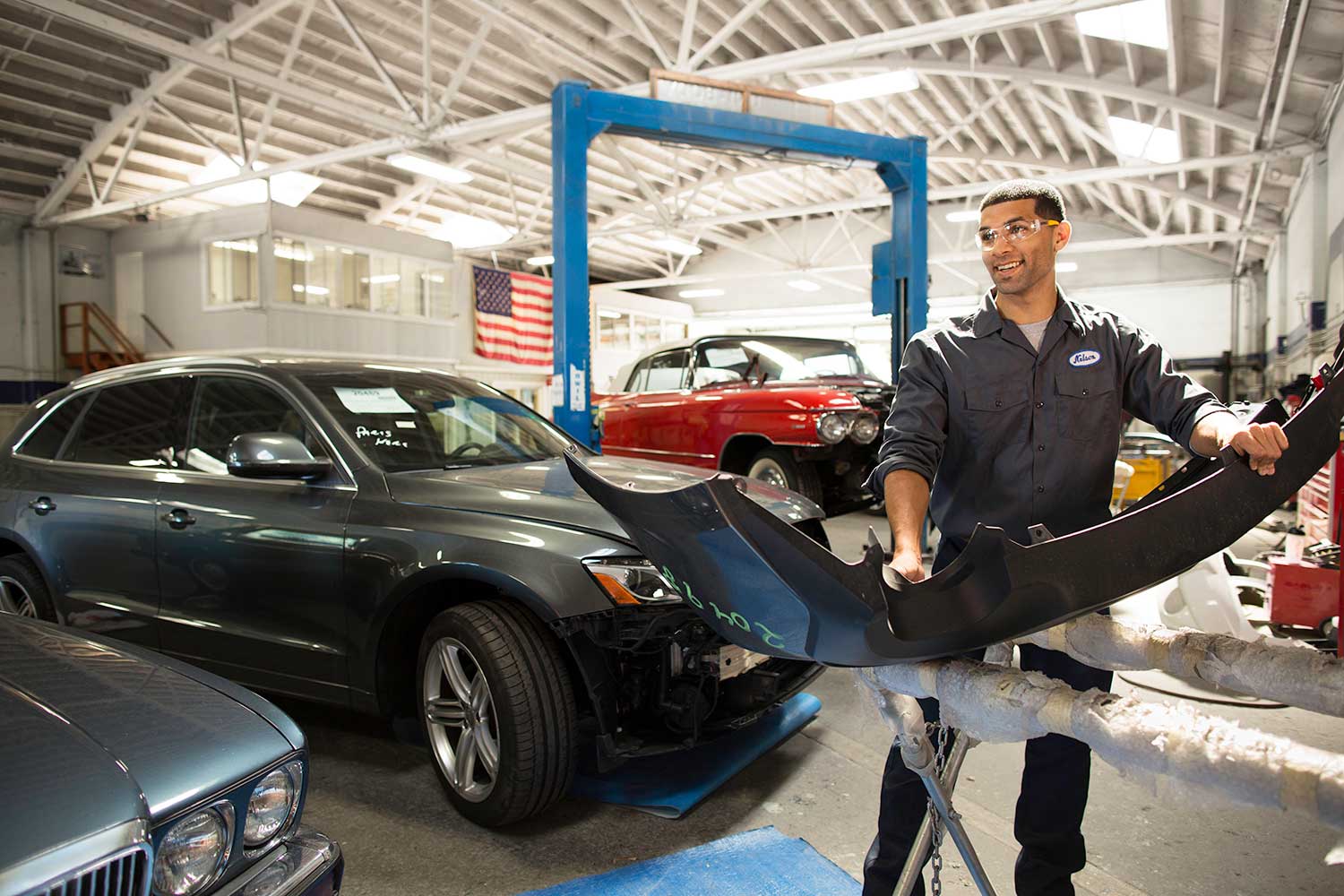
Preventing Technician and Mechanic Injuries: Workplace Safety in the Auto Shop
According to the most recent Bureau of Labor Statistics injury and illness report, automotive mechanics and technicians experienced 13,150 nonfatal occupational injuries and illnesses resulting in valuable time away from work. Auto mechanics and auto technicians work with dangerous machinery, tools and chemicals, which puts them at greater risk for a workplace accident.
Just one workplace injury can have many negative repercussions beyond the employees’ injuries. For business owners, these could include higher wage replacement or medical costs, repairs to damaged equipment and increased workers’ compensation insurance premiums. Business owners can help keep employees safe by understanding the common causes of auto shop accidents, providing regular training and requiring all staff to follow important safety procedures. There are many private organizations that can provide local on-site training and materials. The Occupational Safety and Health Administration (OSHA) provides comprehensive standards information online to help business owners keep employees safe and stay in compliance.
Here are the most common injuries and illnesses sustained by mechanics and technicians, as well as practical steps to mitigate auto shop accidents.
- Sprains, strains and tears. These are the leading injuries sustained by auto mechanics and auto technicians. Repetitive motions while working under the chassis or hood can increase the likelihood of a sprain or strain. Lifting and lowering machinery and heavy tools can also contribute to these types of injuries. A few minutes of morning warm-up exercises can make a big difference in the health and safety of workers. Consider implementing a low-cost workplace stretch-and-flex program. These 10-minute, low-impact exercises can help reduce sprains, strains and tears.
- Eye injuries. Each day, approximately 2,000 U.S. workers sustain a work-related eye injury that requires medical attention. Working under cars and hoods puts auto shop workers at particular risk for these kinds of injuries. The best way to prevent them is to make sure workers wear safety goggles at all times.
- Chemical burns. Flammable and hazardous liquids and chemicals should be properly labeled following Occupational Safety and Health Administration (OSHA) standards. Labels are required to have a pictogram; a signal word, like “danger”; hazard and precautionary statements; the product name and the supplier identification. They also need to include safety handling information and what to do in case of exposure. It’s also important to routinely check containers around the shop to make sure lids fit tightly and there is no spillage or leakage. Workers should wear protective gloves and glasses any time they handle chemicals.
- Loss of limb or digit. Working with power tools like angle grinders and electric metal shears can increase the risk of losing a limb or digit. Train employees to always follow proper equipment operating instructions, keep guards in place and wear proper protective gear when working with power tools. Safely stow all tools when any job is complete, and conduct routine inspections to make sure tools are in safe operating condition.
- Slips, trips and falls. Oil changes, transmission flushes and other routine vehicle maintenance procedures that involve slippery or greasy fluids can make the shop floor slick, increasing the risk of accidents. Make sure technicians wear close-toed, anti-skid footwear. Keep the floor clear and uncluttered and clean up spills as soon as they occur. Place cones or signage to warn workers of slick areas.
By taking proactive steps to address potential workplace risks, auto shop owners can reduce the likelihood of an employee injury or illness and keep their businesses safer. For more information on creating a safe shop, contact EMPLOYERS® today.
